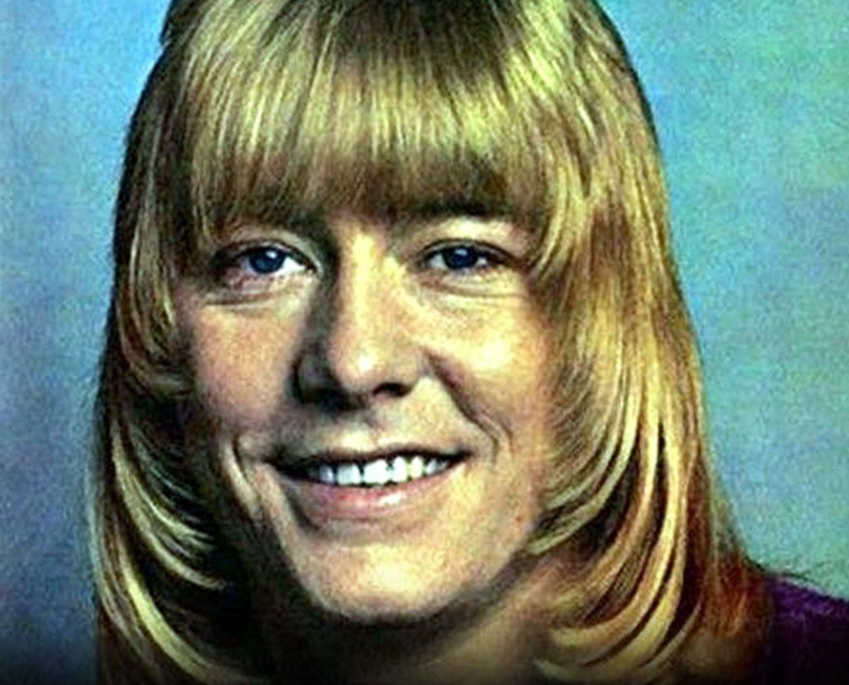In the 1970s, Brian Connolly was synonymous with glam rock — a dazzling star drenched in sequins, with a voice that could ignite a stadium. As the lead singer of The Sweet, he wasn’t just a rock star; he was a legend. Hits like “The Ballroom Blitz,” “Fox on the Run,” and “Block Buster!” dominated the airwaves, earning the band over 50 million records sold worldwide. To fans, Connolly was larger than life — a flawless mix of confidence, charisma, and undeniable talent. But beneath the glitter and thunderous applause, his personal life was falling apart, a struggle that few saw coming.
Born in 1945 in Scotland as Brian Francis Connolly, his early years were marked by hardship. Abandoned at birth, he was adopted by the Connolly family, who raised him with love but kept him unaware of his biological roots. Years later, he discovered that he was the half-brother of actor Mark McManus, a revelation that gave him both pride and pain, knowing his bloodline was far removed from the life he had known.
In his teens, Brian found solace in music, gravitating to London’s vibrant club scene in the 1960s. By the mid-‘60s, his golden locks and soulful voice made him a regular on the stage, eventually leading to the formation of The Sweet. The band became synonymous with the glam rock movement, a genre characterized by flamboyance, wild energy, and pure excess.
At the height of their success, The Sweet was unstoppable. Connolly’s charisma electrified every performance. Their blend of infectious pop melodies and hard-edged rock riffs made them both commercially successful and critically revered. Fans screamed for him across Europe and America, and their singles topped charts worldwide. But behind the scenes, the pressures of fame — the constant touring, the endless demands of record labels, and the weight of expectations — were taking a toll on Connolly’s health and well-being. The glamour and adoration were masking a darker reality: a growing dependence on alcohol to cope.
By the late 1970s, the cracks began to show. Connolly’s once-powerful voice faltered, his health declined, and the band began to fray at the edges due to creative tensions and exhaustion. When he left The Sweet in 1979 to pursue a solo career, fans hoped for a revival, but the magic never returned. His solo singles were largely overlooked, and the public moved on.
In 1981, disaster struck. Connolly suffered a series of heart attacks — thirteen in one night, according to some reports. The physical damage was severe: partial paralysis, nerve damage, and a face that no longer resembled the one seen on the cover of magazines. Doctors warned him that his hard-living ways would eventually kill him, but Connolly, ever defiant, refused to give up performing.
Financial woes followed, as years of poor management and unpaid taxes caught up with him. In 1983, Connolly had to sell his home just to stay afloat. The man who once filled arenas was now struggling to make ends meet, performing in small clubs and pubs under the name “Brian Connolly’s Sweet.” Despite his declining circumstances, his passion for music never waned. Audiences who saw him during these years often described his shows as haunting — a man who knew he was fading but sang as though he had something still to prove.
In 1995, Connolly seemed poised for a comeback. He released a solo album, Let’s Go, and began granting interviews again. His candor was striking — he spoke openly about his failures, his struggles with alcohol, and the regrets that weighed on him. A 1996 BBC documentary, Don’t Leave Me This Way, portrayed him as frail and vulnerable, but still sharp-witted and full of defiant spirit. Fans who had once idolized him were shocked to see the golden god of glam rock reduced to an aging, scarred man, but one who was, nonetheless, unmistakably human.
Despite his physical decline, Connolly continued to perform in small venues across the UK. By then, fame no longer mattered to him. It was the music that kept him going — the one thing that had always given his life meaning. In interviews, he admitted his fear of death but confessed that his greatest fear was being forgotten. “As long as there’s someone out there still playing our songs,” he once said, “then I’m still here.”
In December 1996, Connolly performed for the last time. His body was frail, his movements slow, but when he sang, something still sparked. Just two months later, on February 9, 1997, Brian Connolly passed away at the age of 51, his death caused by liver and kidney failure following repeated heart attacks.
His passing struck a chord with fans, particularly those who remembered the vibrant energy he brought to The Sweet’s heyday. But for those who had witnessed his final years, there was a quiet sense of peace — a belief that he had finally escaped the pain that fame, addiction, and failure had brought him.
Connolly’s life was a study in contrasts: the meteoric rise, followed by the painful fall. He proved that talent can make you a star, but it can’t save you from your inner demons. Yet, even in the face of tragedy, he left behind a legacy that went beyond music. His refusal to give up, even when everything seemed lost, became part of the story he left behind.
Nearly three decades after his death, The Ballroom Blitz still plays at parties and on classic rock stations, introducing his voice to new generations. And if you listen closely, behind the pounding drums and glittering guitars, you can still hear that raw, joyous energy — the same energy that made Brian Connolly unforgettable. He lived fast, fell hard, but sang his heart out until the very end.
